September 20, 2015 Auroras
Itasca County
Well, this was an interesting night. Some normal variation in the solar wind had Bz pointing south, and this being September near the equinox, it does not take much of a southward deviation in Bz to spark auroras. After spending an evening with friends, I decided to head out from town a little bit to do some photography. I got out to the bog north of town, and the auroras were barely perceptible, shining even less brightly than the glare from the lights of the surrounding small towns. After about 30 minutes of watching them, they started to brighten up, but clouds developed on the northwestern horizon and started to move in, so I decided to call it a night (don't stop reading here).
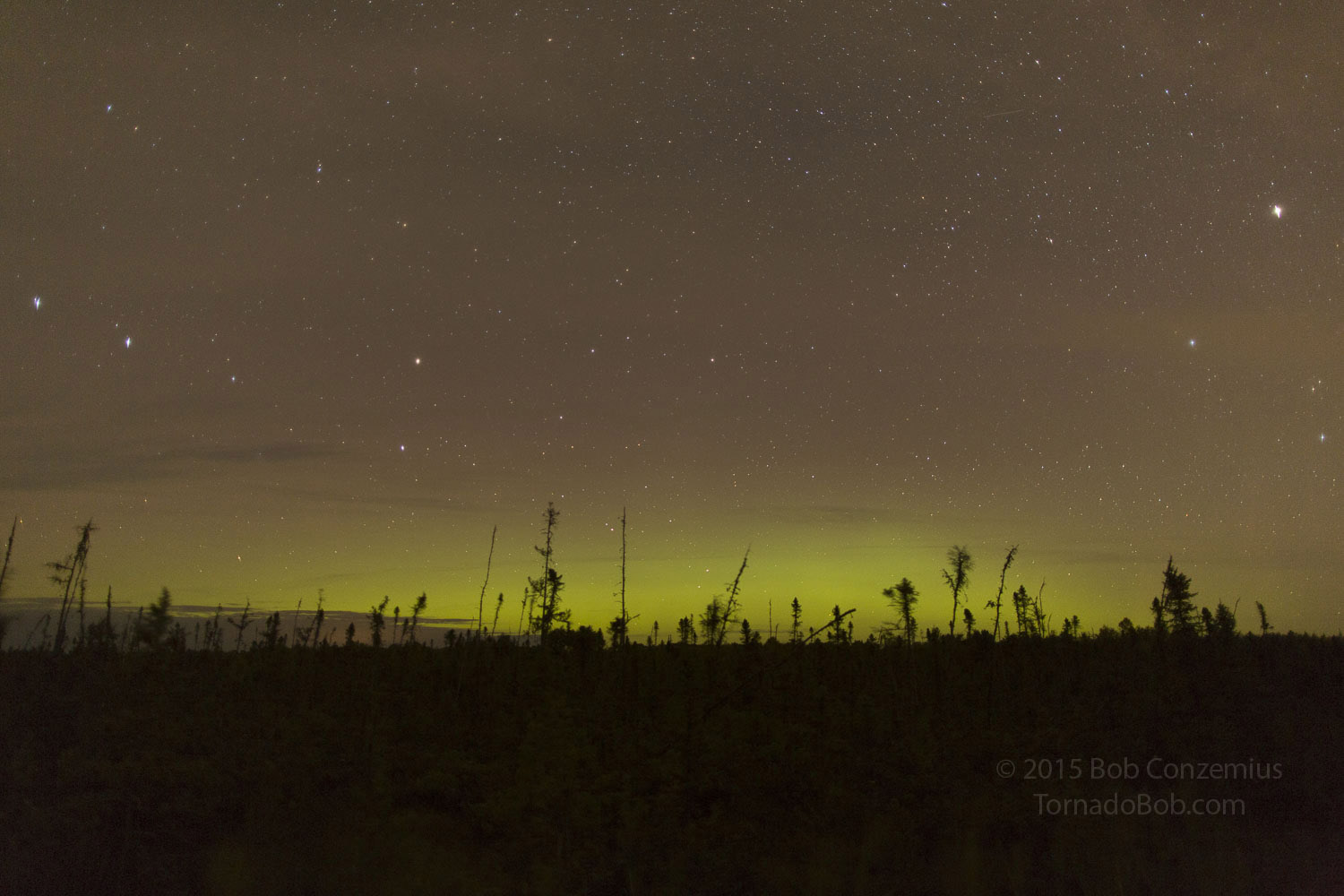 |
| Auroral glow on the northern horizon viewed from the north side of Grand Rapids. |
My customary ritual upon going to bed involves browsing a bit on my iPhone because we're all addicted to them nowadays, and why not get a little more of a dose before falling asleep. It helps to soothe me and makes me feel drowsy, so it's easy to fall asleep. Usually, this browsing includes giving the solar wind data a check, and the usual result is the data do not look any more interesting than they did before I decided to go to bed. Then, as luck often has it, as soon as I fall asleep, Bz dives south, and the auroras come out after I've fallen asleep. The solar wind doesn't really care about my sleep schedule, so it's not trying to make me miss an aurora show. It simply follows the laws of physics.
This time, however, my check revealed that a CME had hit about the exact moment I had crawled into bed. In such instances, I sometimes think about it a bit and decide it's not really that interesting, and I fall asleep, but this time, Bz was dropping south to around -18 nT or so, and that's about three times what is needed at this time of year to make a really good show. It was a must-photograph situation.
The difficulty I had before me tonight was the clouds. They had moved into a perfect position to obscure the northern horizon, which is why I had gone to bed. If the solar wind continued to look as good as it had just become, I really would not have to worry about that, as the auroras would climb higher above the horizon and above the clouds (from my point of view). Nevertheless, I feared the clouds would totally envelope Grand Rapids, so I decided to head west to get to the west of them so that if they moved anywhere, they'd move away from me. This took me only to Deer River where, to my delight, cleared away much closer to home than I thought I would see them part. Flirting with the southwestern edge of the clouds, I decided to stop at Cottonwood Lake. There, I watched as the auroral oval came quickly southward and expanded into a bright substorm.
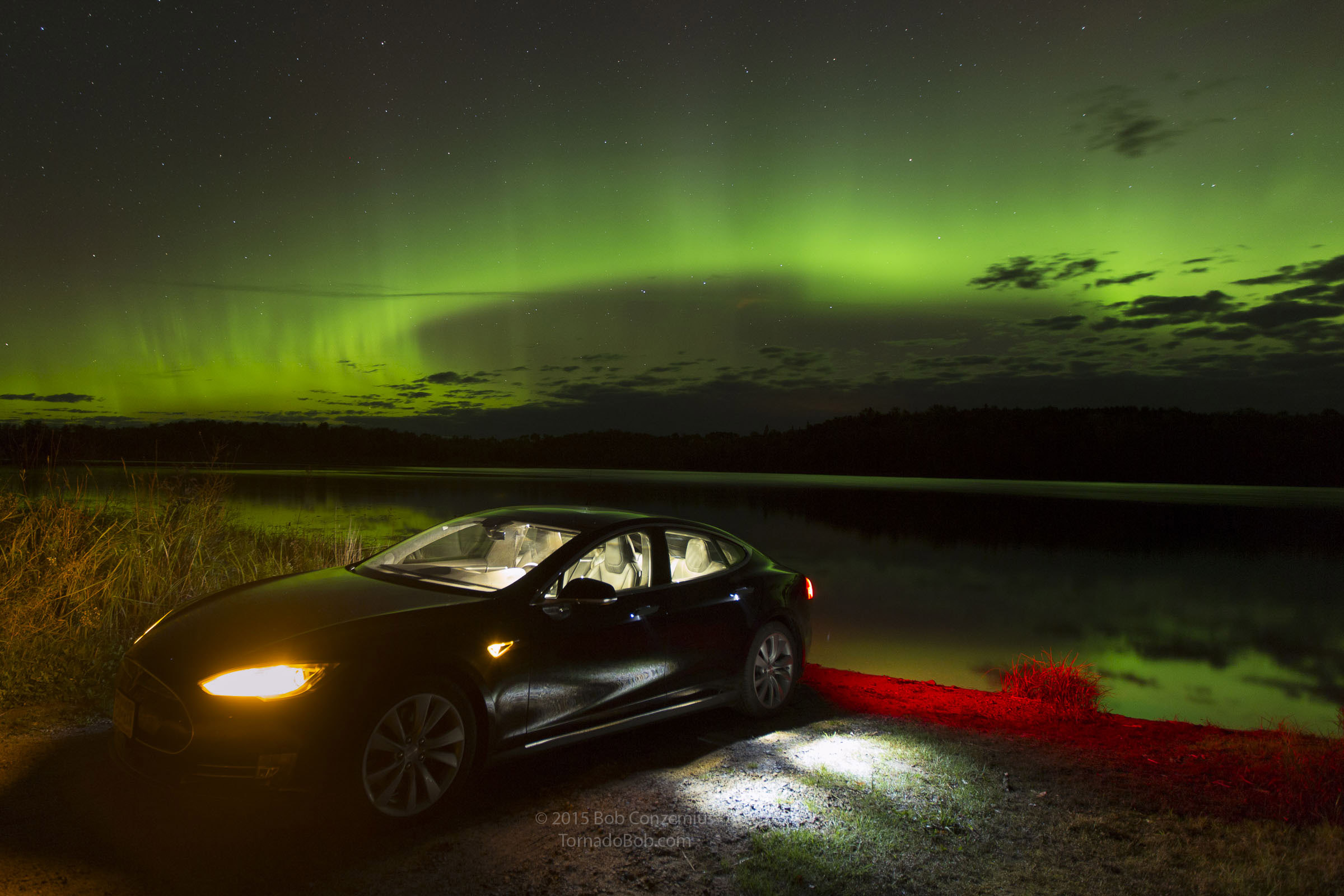 |
| I parked at this boat landing on the shore of Cottonwood Lake. |
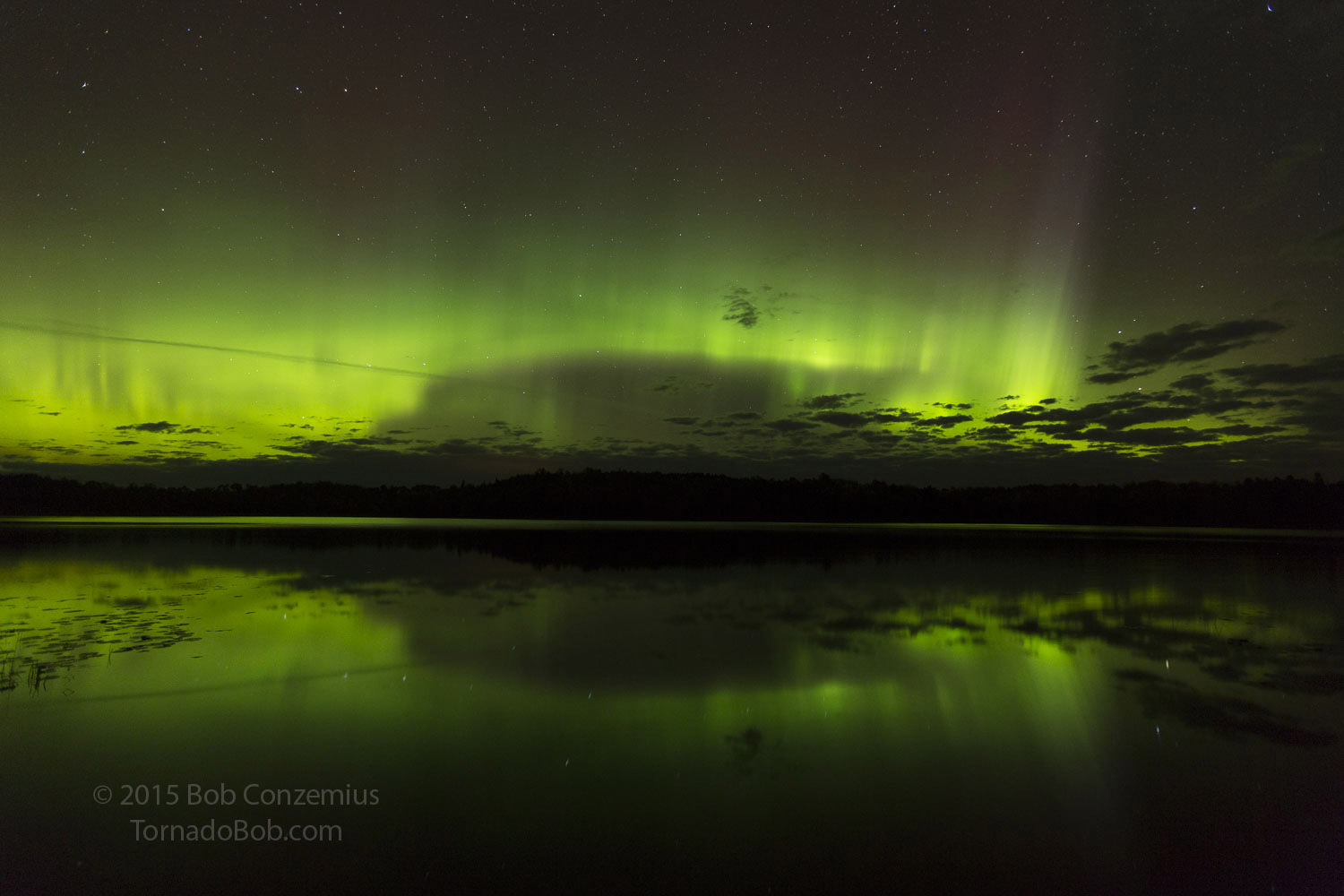 |
| Started to shoot auroras. |
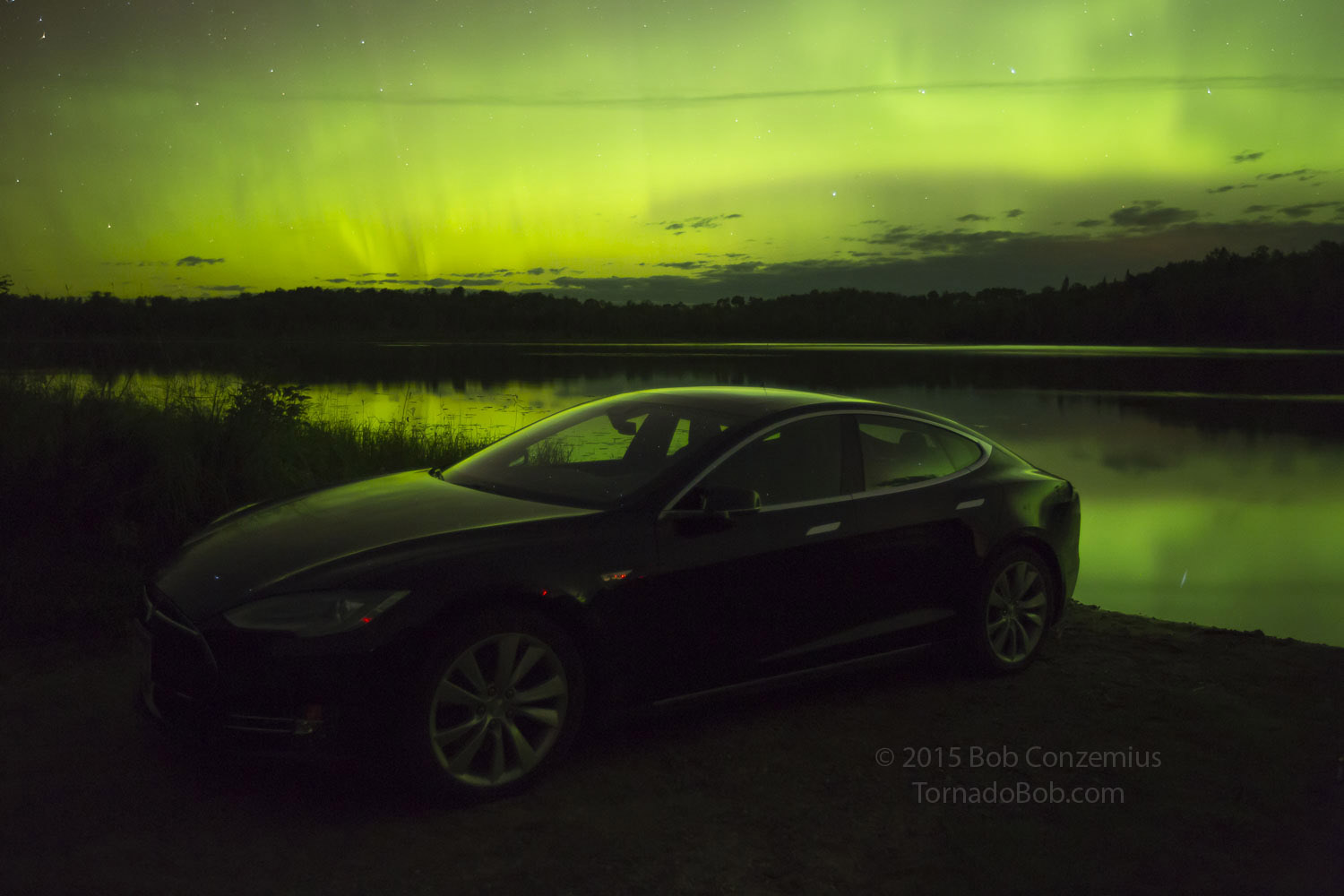 |
| I tried to take an interesting picture of the car while leaving the other camera on its own. |
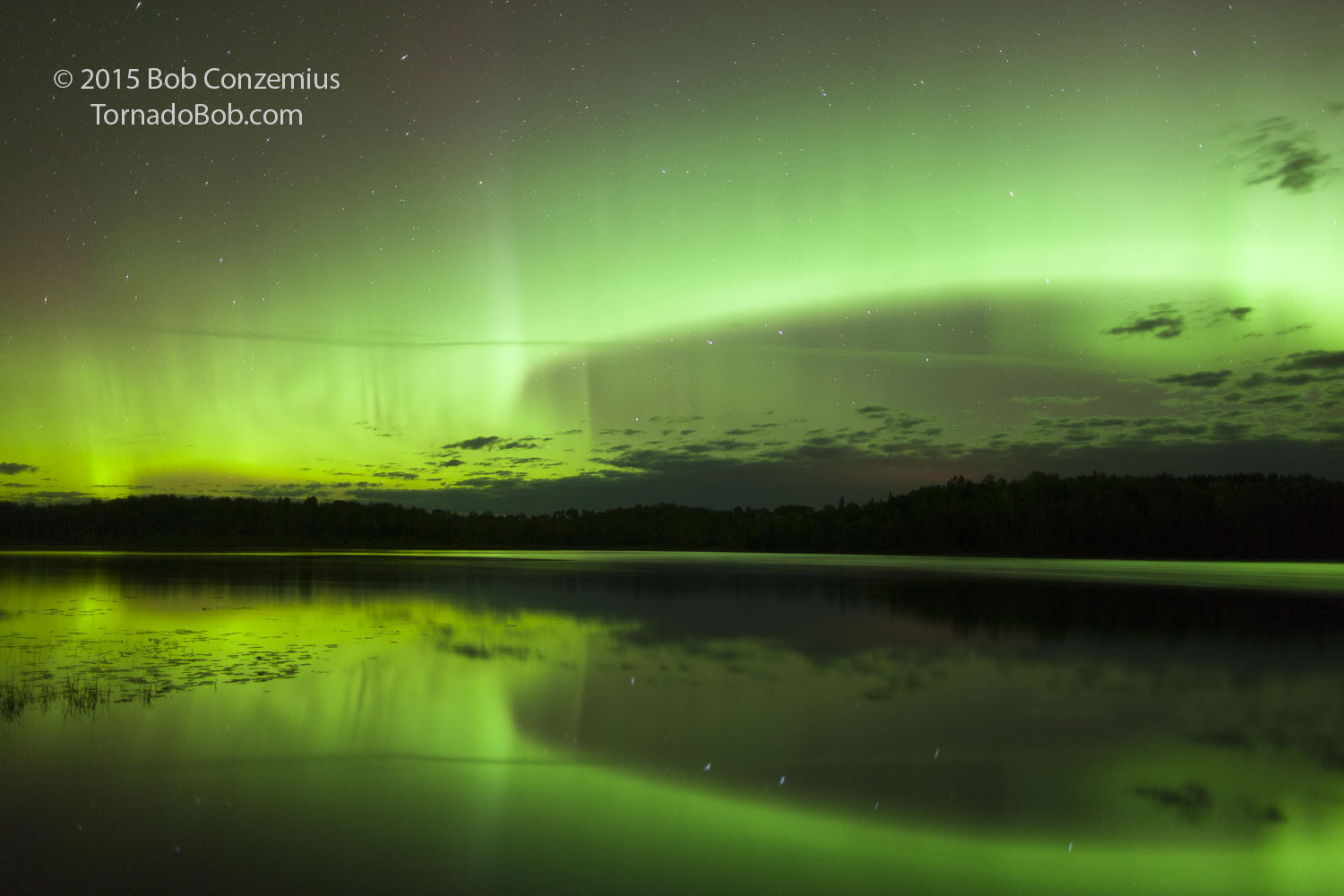 |
| As the auroras brightened, the other camera, with its settings no longer being adjusted, began to overexpose. |
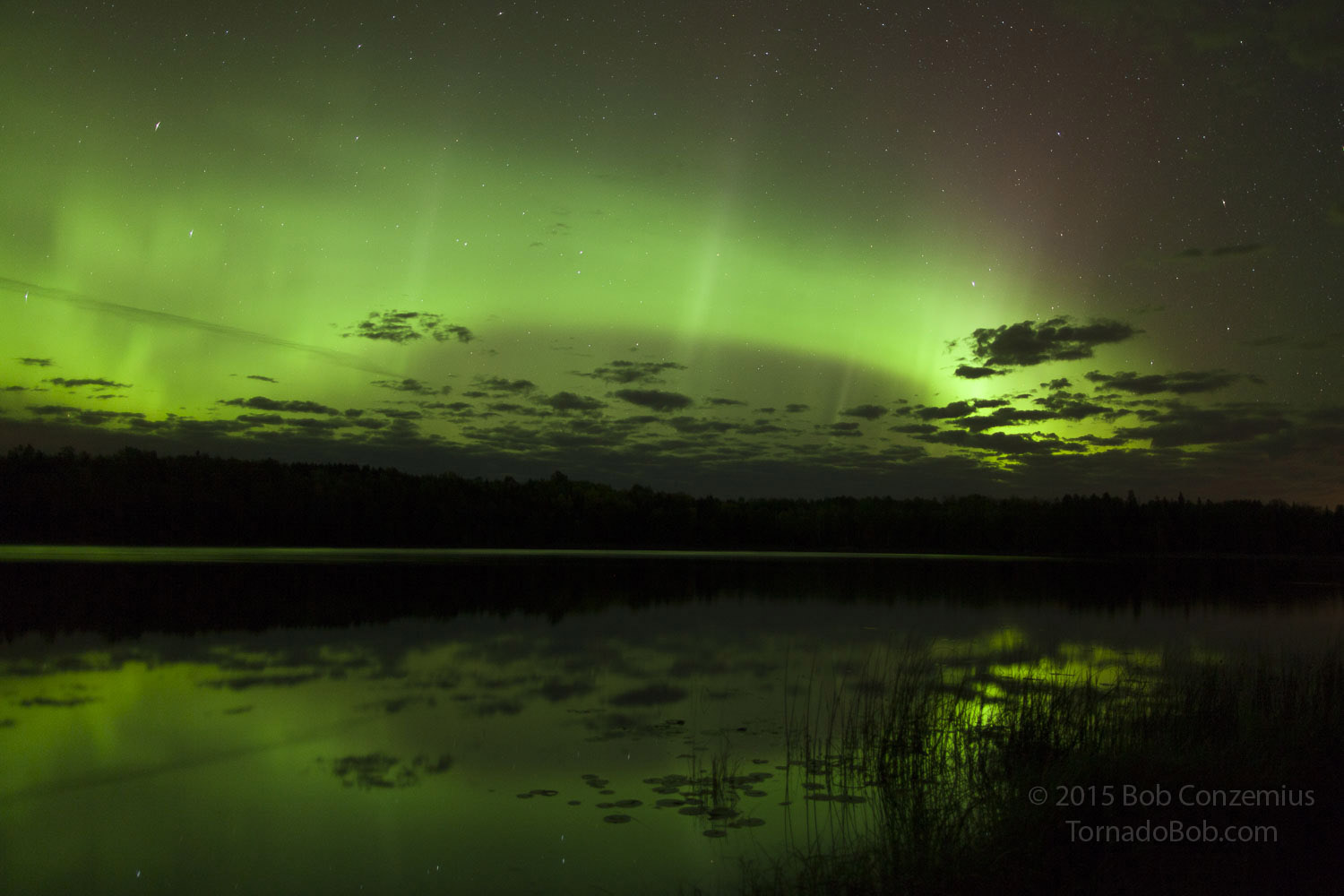 |
| Eventually, I got things under control. |
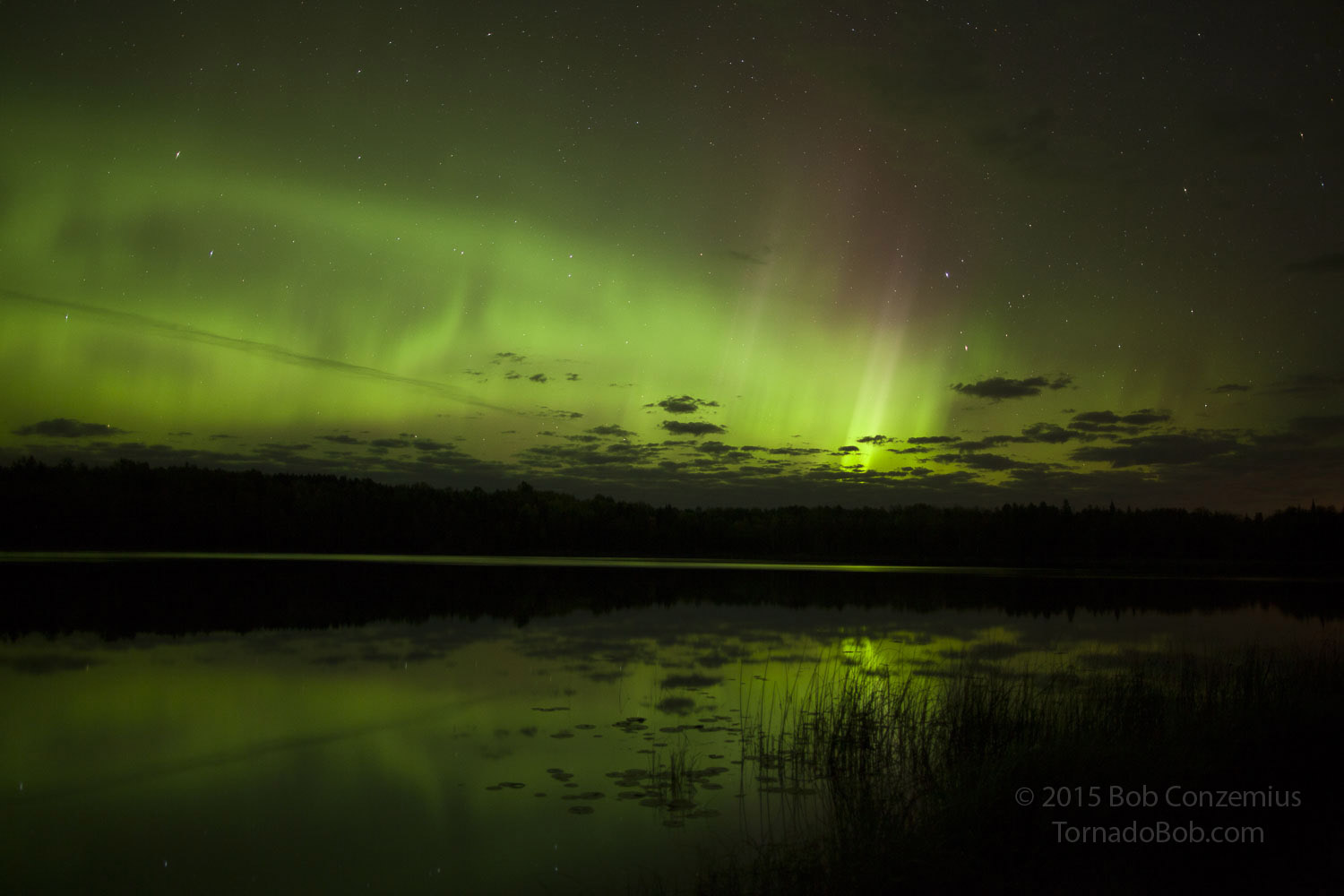 |
| There was some variation in color, too. |
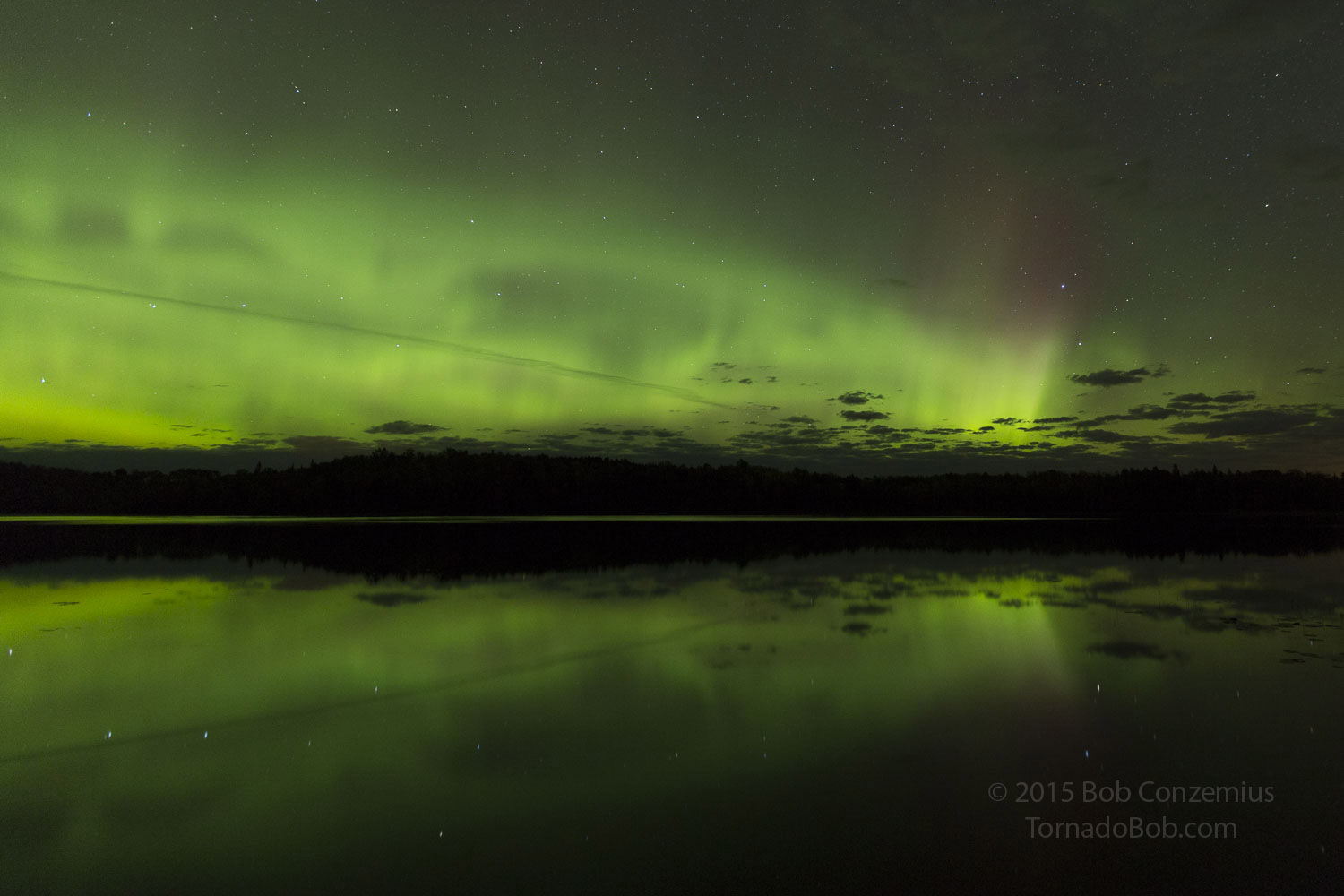 |
| And the auroras started to dim a little, but the reflections in the water were amazing. |
Eventually, the substorm faded, the auroras retreated a little to the north and dimmed, and a few clouds began drifting in from the south. I decided to explore shooting options a little farther northwest, where there were definitely no clouds. I began driving north on Highway 47, turning my head occasionally to the right to monitor the progress of the auroras above the northern horizon. They were beginning to congeal into a single auroral arc again, which often means that another substorm will occur, but the arc was rather close to the northern horizon. I started to think I had already seen the best the night had to offer. However, I was close enough to Winnie Dam that I thought I'd travel the rest of the way and set up for a few shots before turning back home.
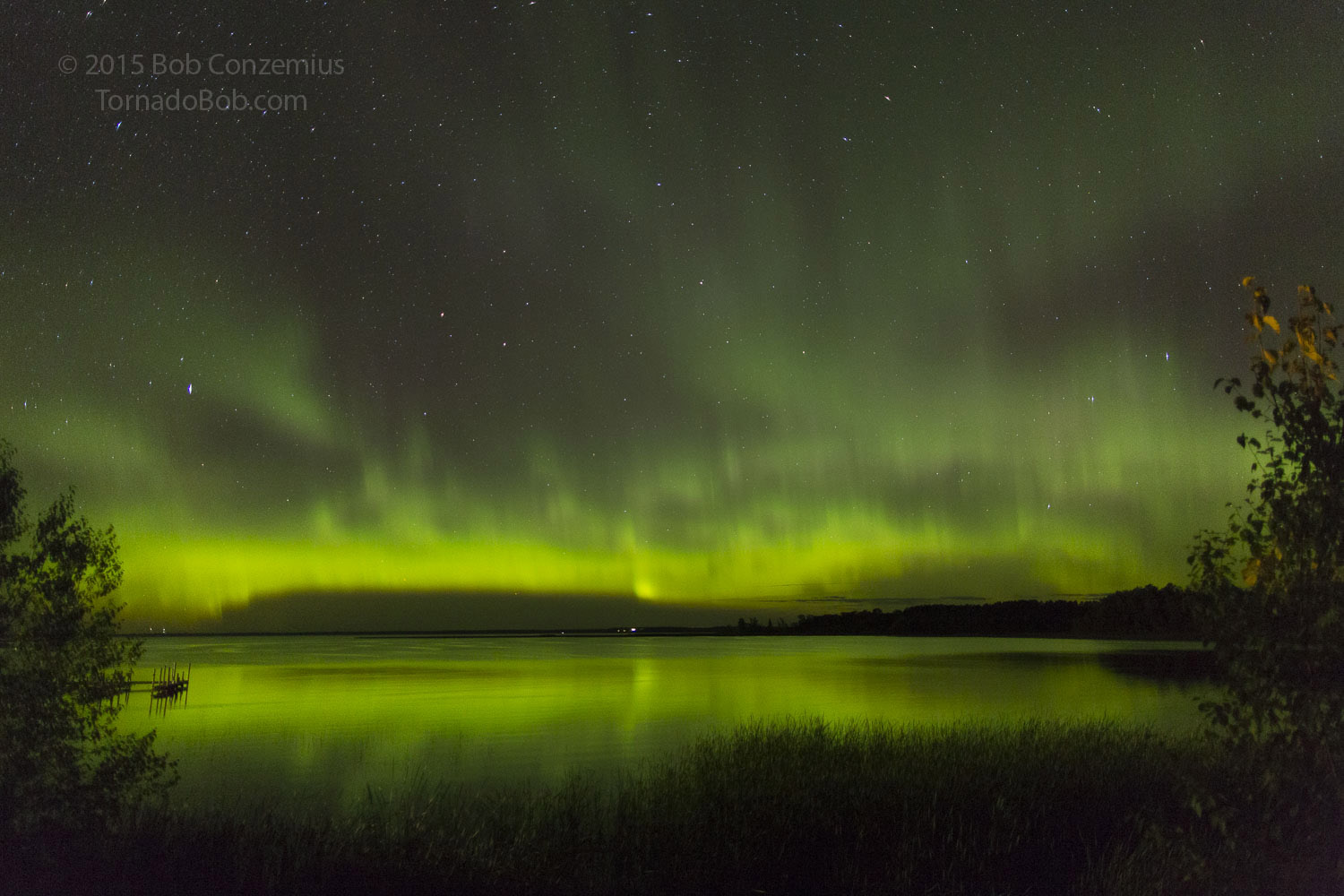 |
| The main oval was close to the horizon, but there were still blobs much closer overhead. |
The oval developed a bit of a wave pattern and started moving southward again. The display was becoming a bit more interesting again! Additionally, the reflections in the water below were really nice, so I kept shooting. The blobs were pulsating enough, and there was also enough structure appearing within the main oval, that I decided to start a time lapse with one camera while concentrating on stills with the other. With a time lapse, it's always best just to leave the camera alone, regardless of the temptation to point it to a more insteresting part of the sky. That will make for a really jerky time lapse. Just leave that camera alone!
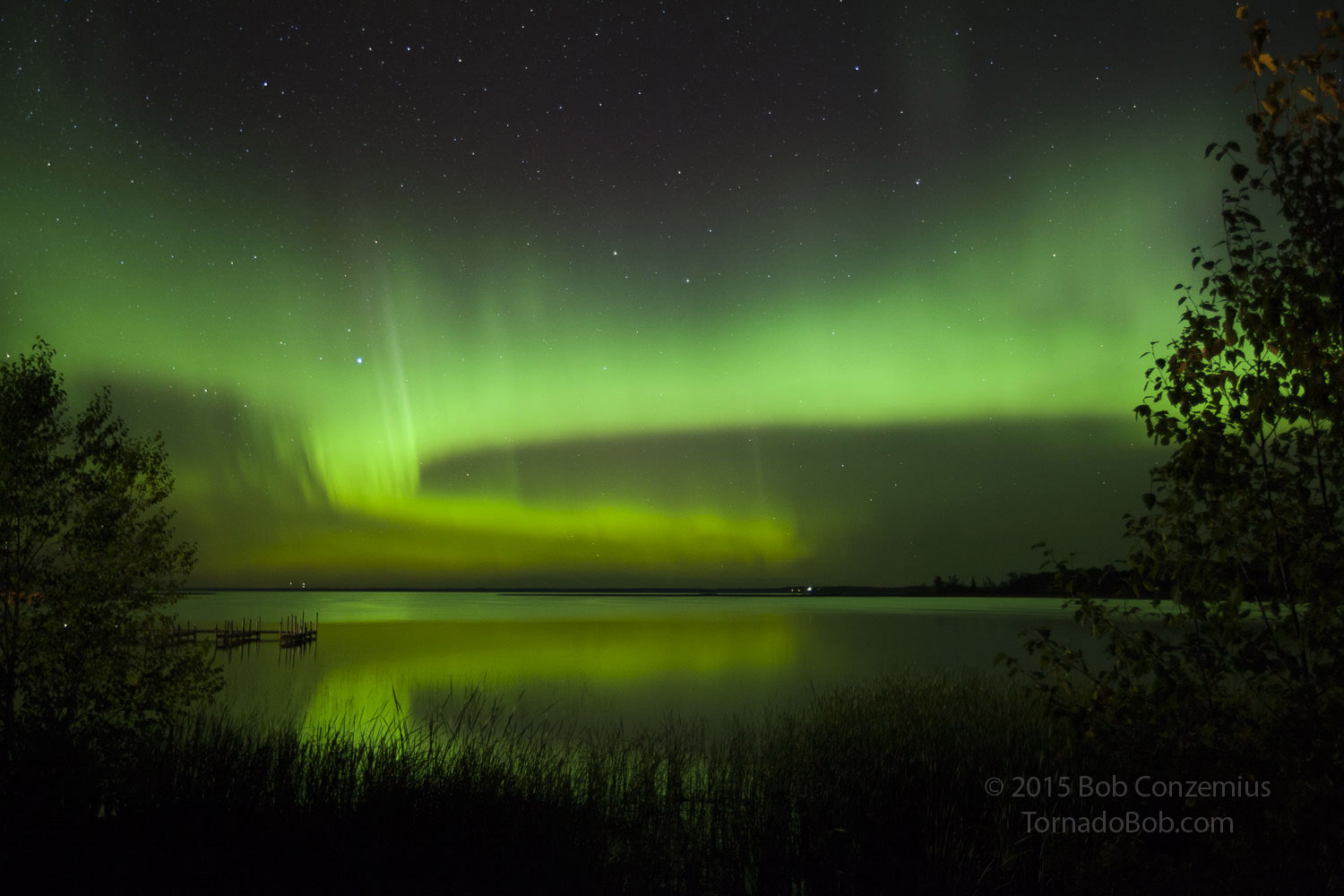 |
| The arc started to approach more closely. |
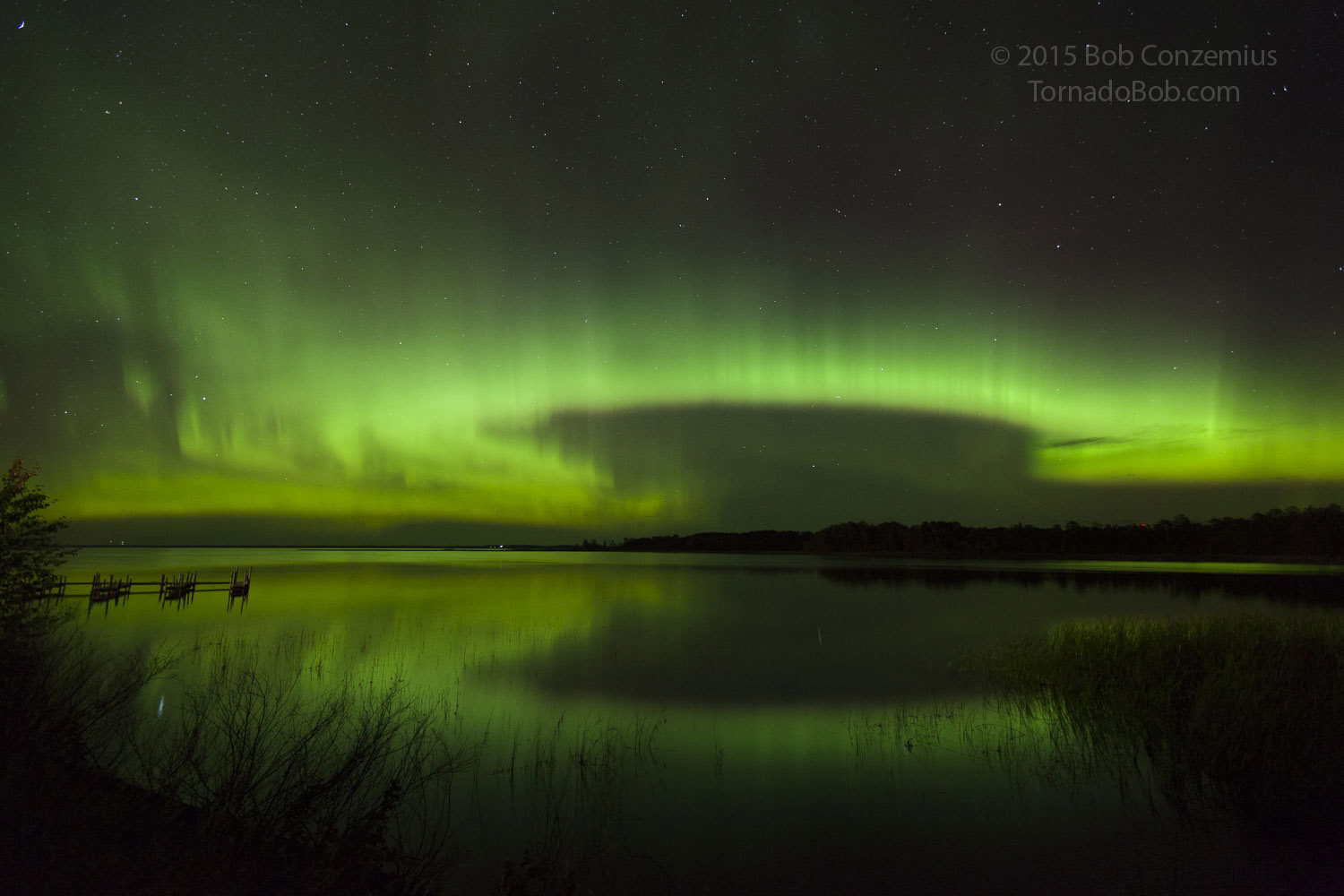 |
| A wider angle view. |
 |
| Now looking more to the northeast. |
 |
| Back wide again. |
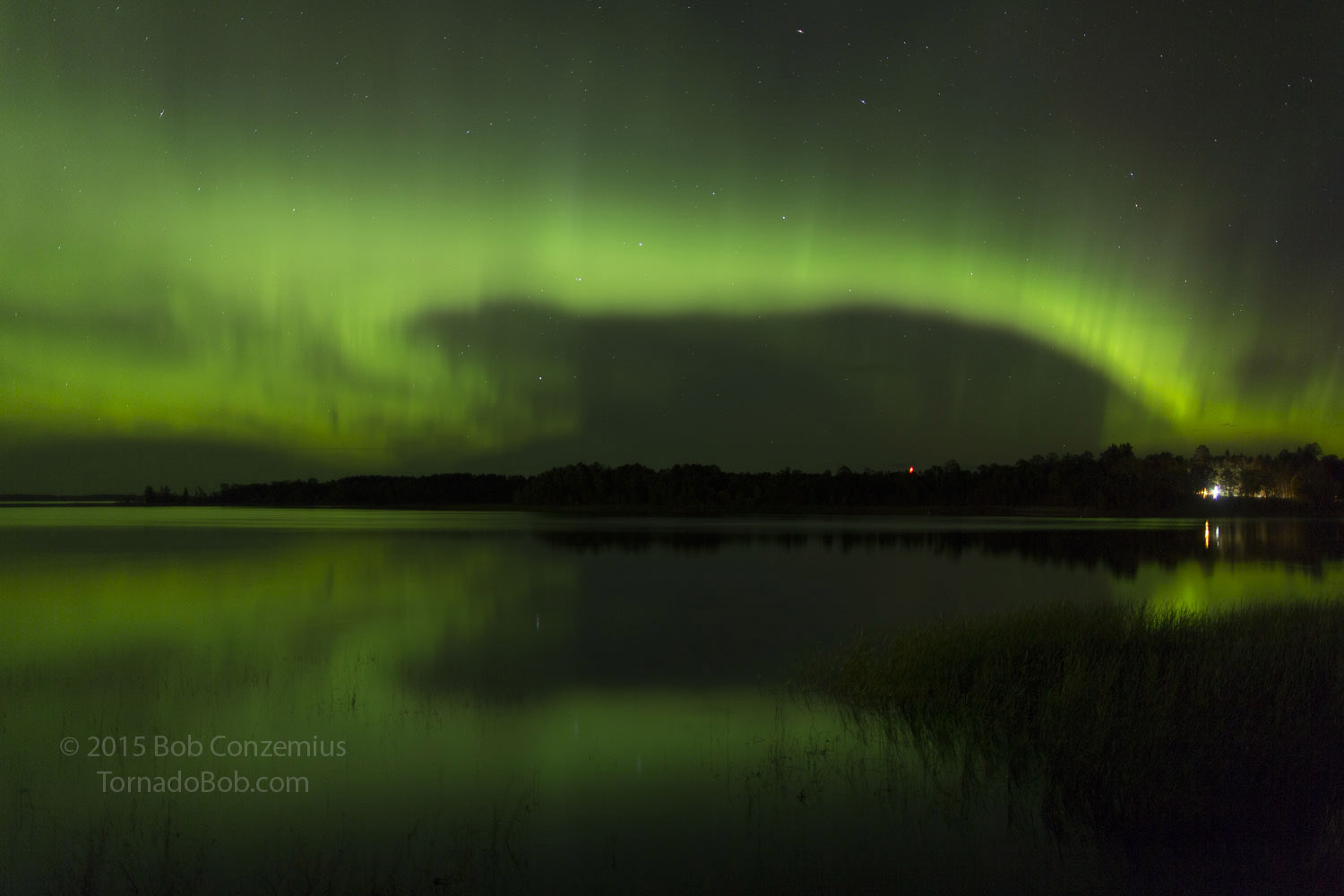 |
| With some faster motion resuming, I started snapping more shots with the 24mm lens at shorter exposure times. |
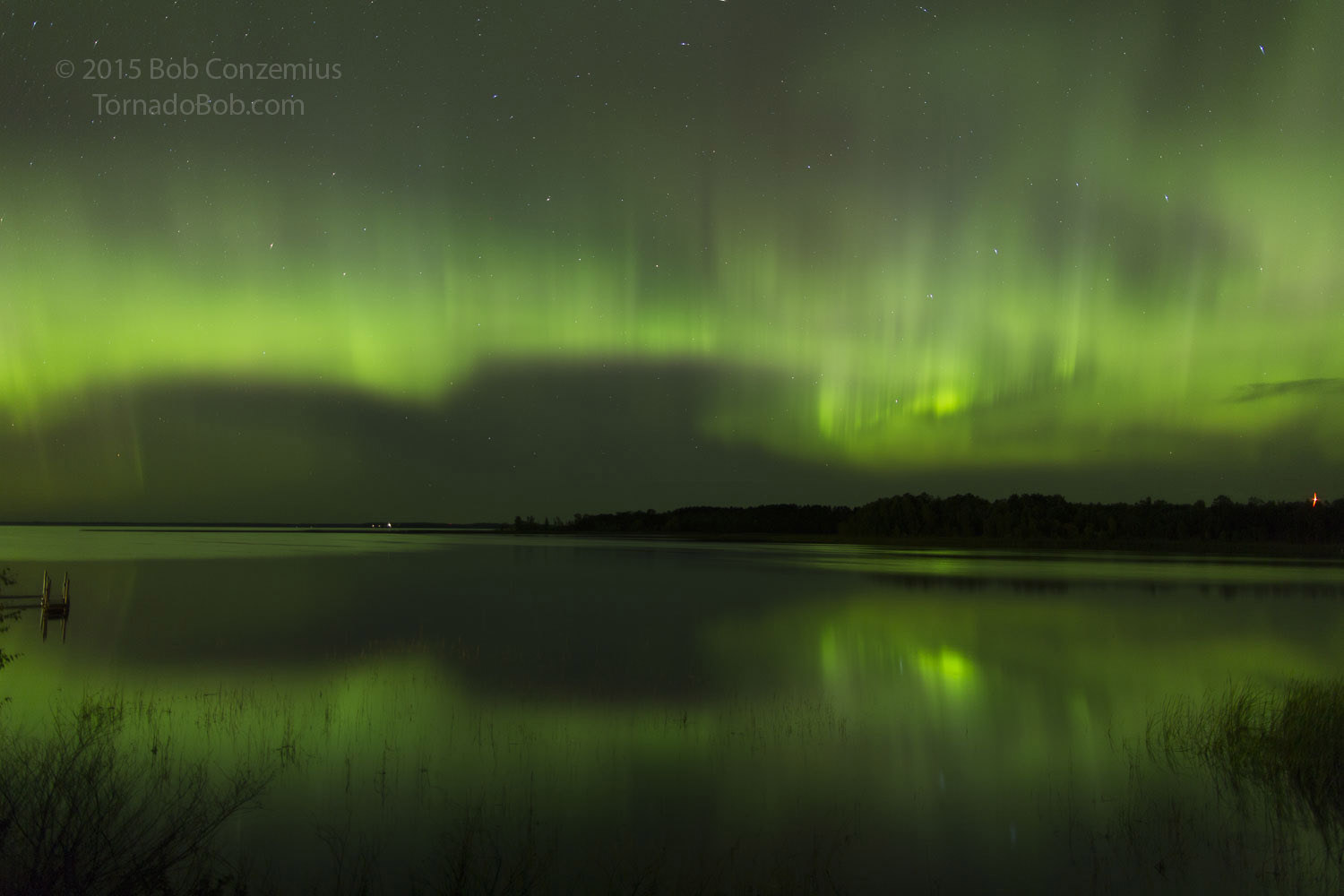 |
| I could drop down to ISO 400 for this shot. |
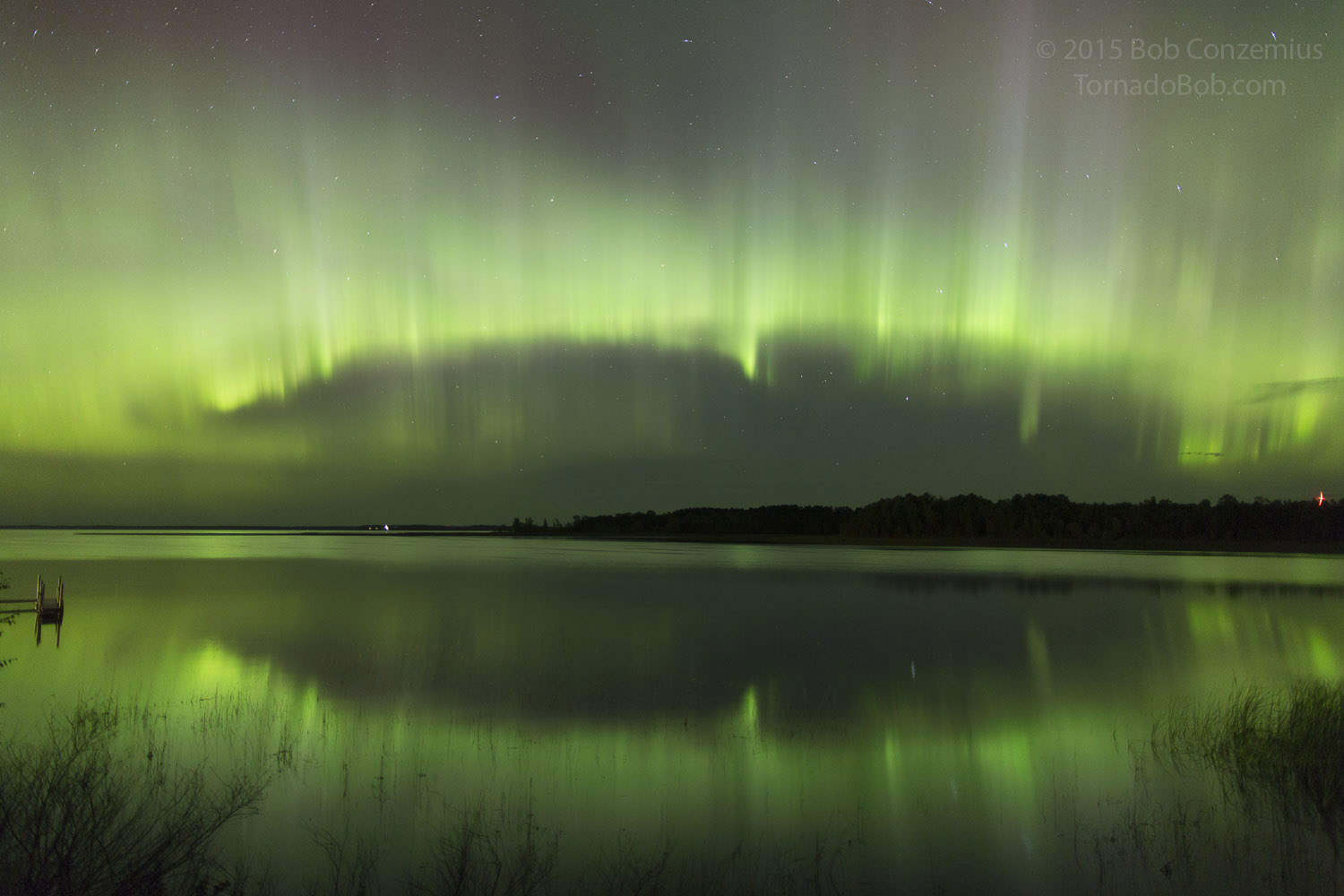 |
| More motion now, so I increased to ISO 800. |
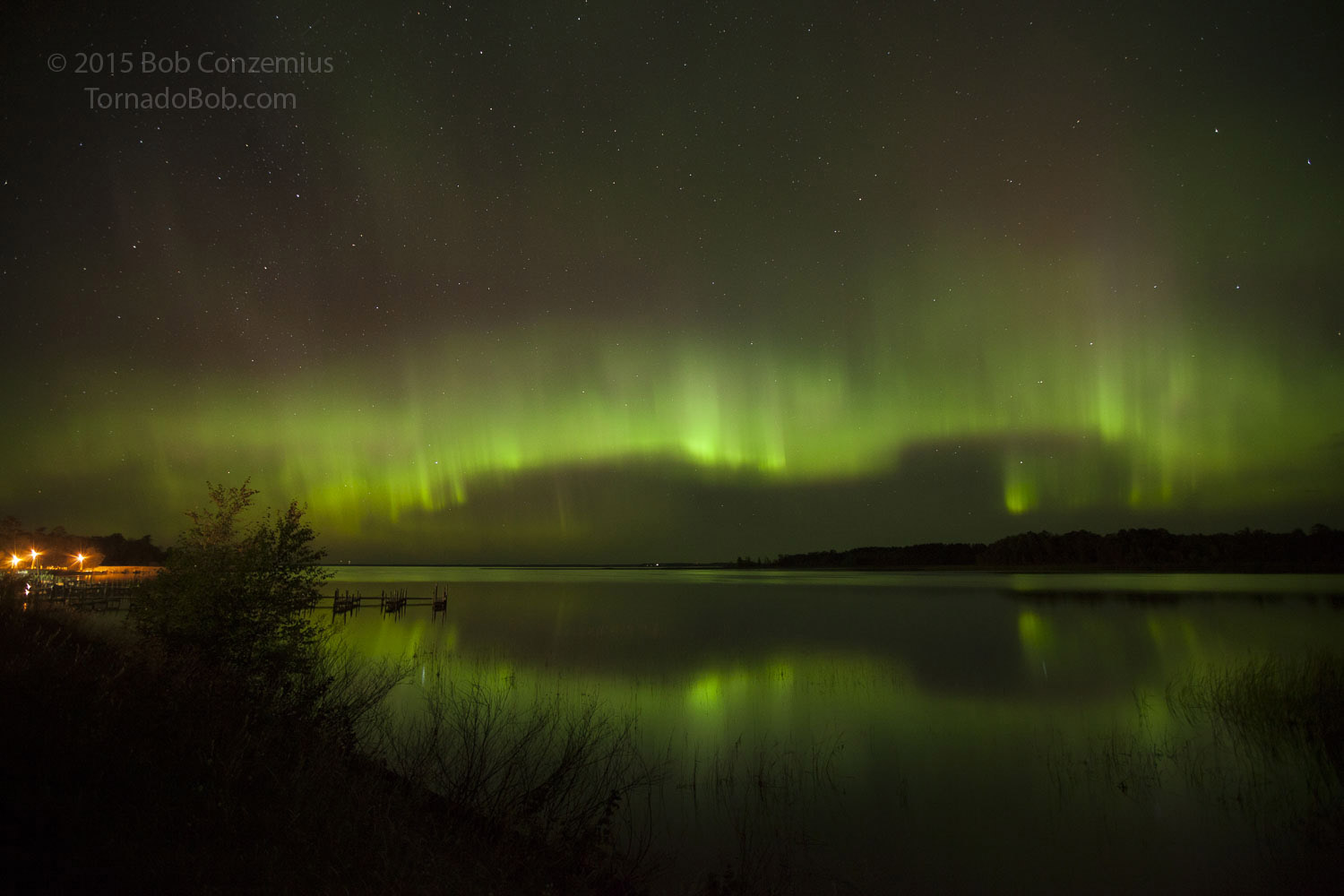 |
| The other camera caught more of the show at 16mm. |
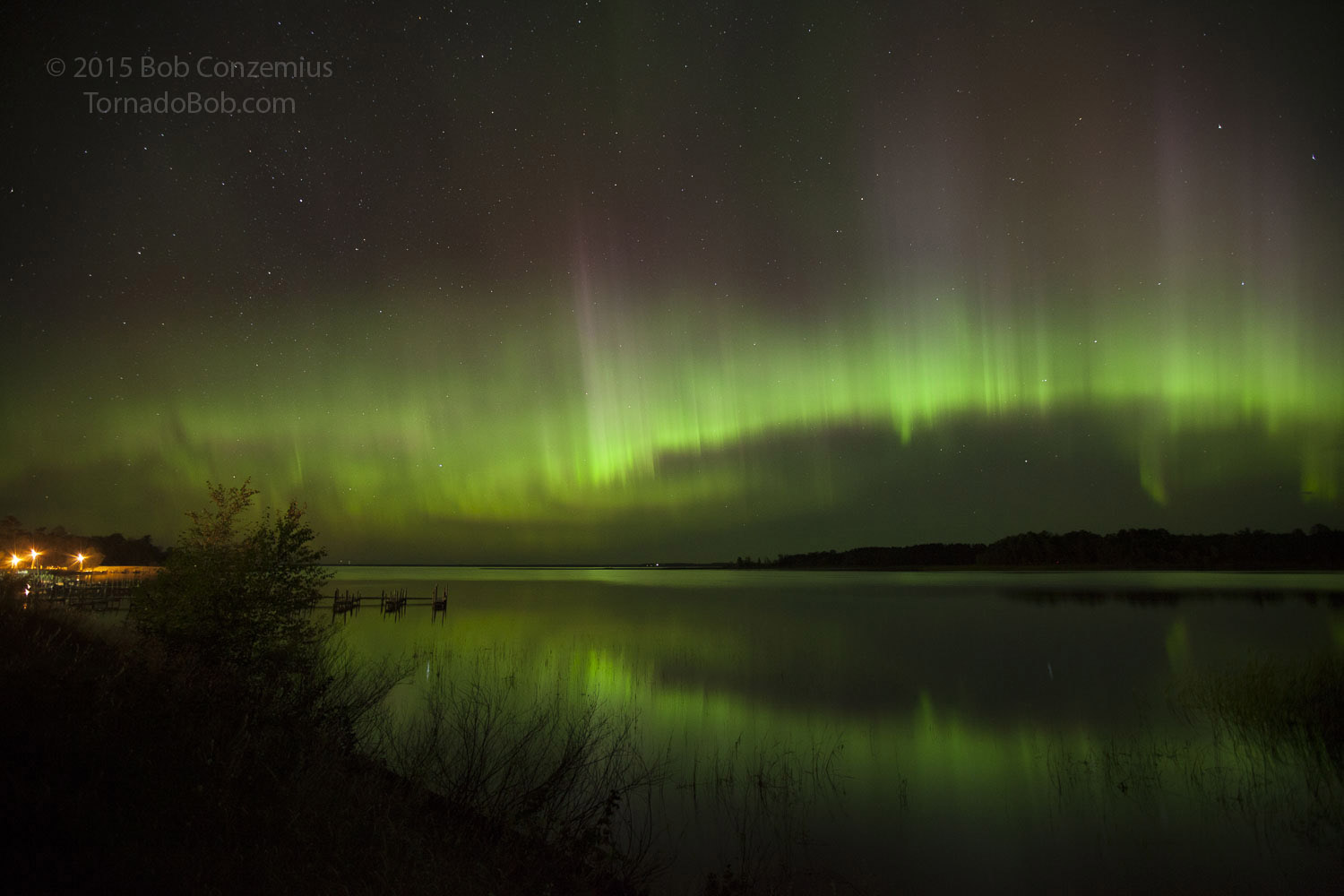 |
| Then this. |
The motion and brightness began to fade into dimmer, pulsating blobs, so I knew the best was at least temporarily over. I decided to make my way back to the car and then start the drive home on 47... not before taking a couple more shots
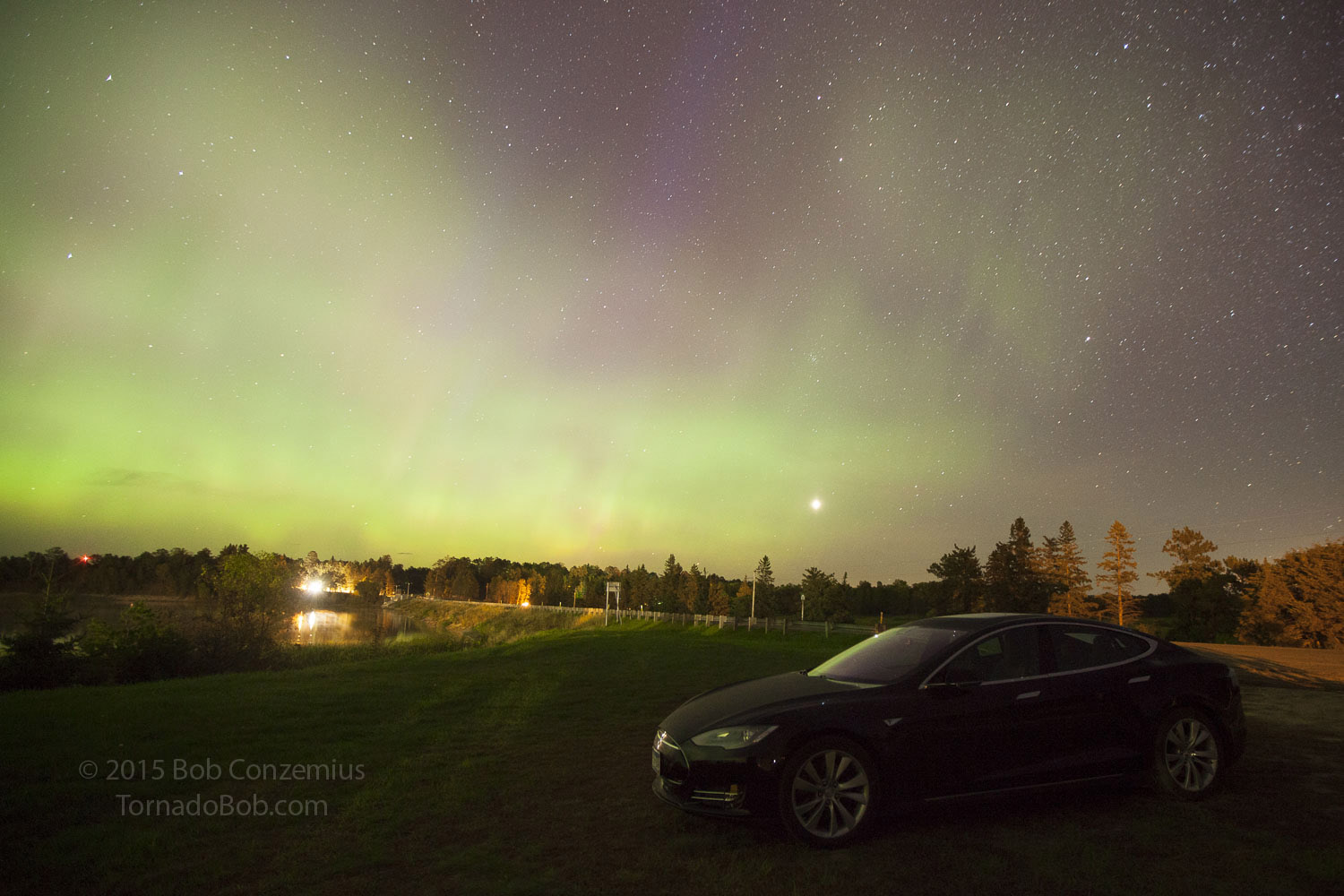 |
| Dimmer, pulsating auroras shot at ISO 3200, f2.8, 30 seconds, 16mm to brighten things up a bit. |
On my way out to the dam, I had passed a cat-like animal, killed by an automobile impact and lying in the road. In most instances, these are house cats, but the location in the road was not particularly close to any homes, so I wondered if it was a bobcat and decided to check it out on my way back. As I scanned the road, I found it in its original location, having been moved a little by what was most likely an impact from a second vehicle. As there were no cars on the road for miles, I stopped in the road and gave it a look. It was a beautiful animal, and having two house cats of my own, it was rather sad to see it lying lifeless on the road (yes, bobcats do kill house cats, but they are part of our wild landscape and they have a longer history here than house cats do). I pulled it by its hind paws to a more dignified resting place on the shoulder of the road.
This was a rather scenic spot, with the auroras silhouetted against tall jack pines standing defiantly as survivors of the storm that had downed a swath of forest through the area three summers ago. It's also fun to admire the quiet of a highway at this time of the night, standing in a place where I would quickly be run over during the day and hearing no car noises whatsoever.
That quiet lasted a couple minutes before I heard the sounds of tires rolling at high speed on pavement a couple miles away. A car was coming. I kept firing 30-second exposures at ISO3200 until I saw the brightening between the trees that signaled the imminent appearance of the car's headlights. I had enough time at this point to pack up the camera and tripod, hop in the car, and accelerate to 60 mph before I was overtaken. It's amazing how far away you can hear cars at this time of night.
 |
| Dimmer, pulsating auroras shot at ISO 3200, f2.8, 30 seconds, 16mm to brighten things up a bit. |
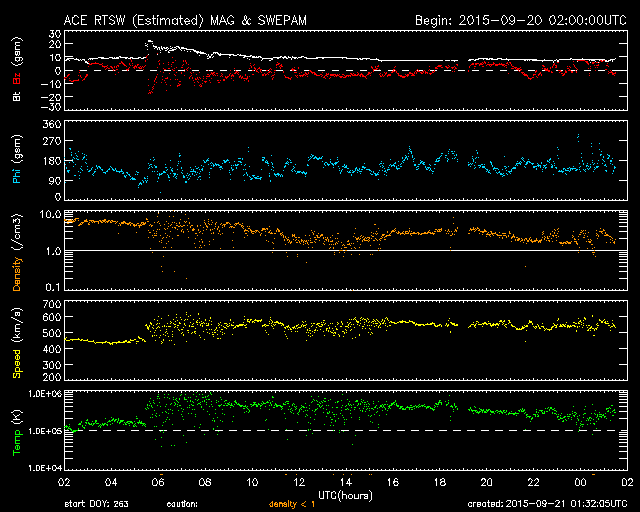 |
| Solar wind data from this event. |
Back to Auroras | Home
